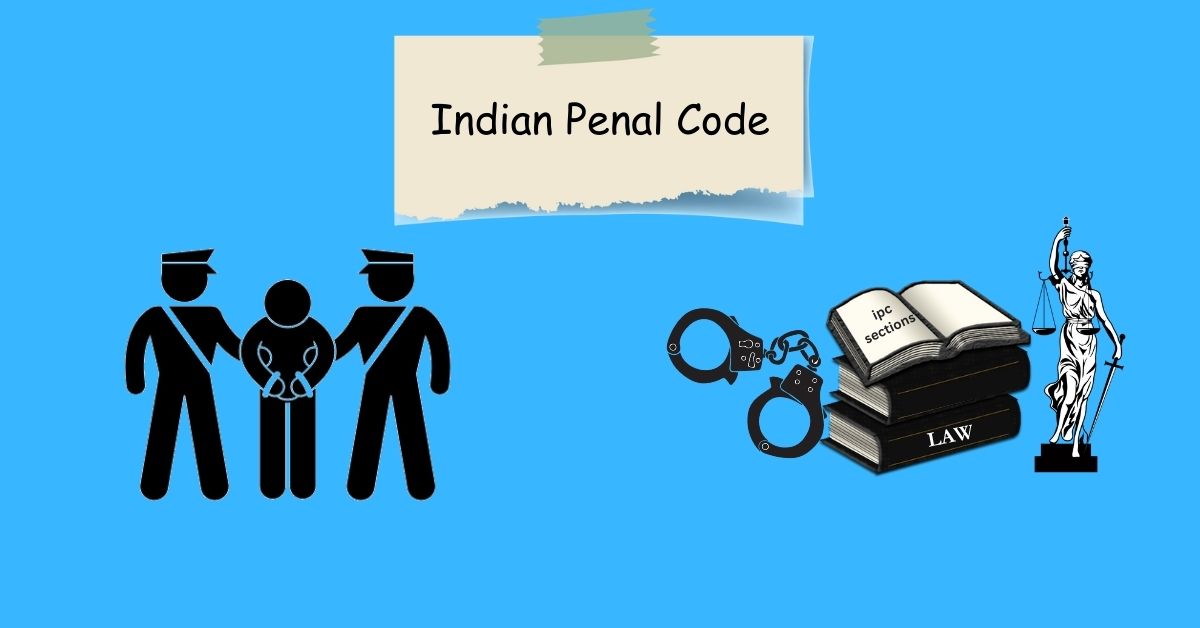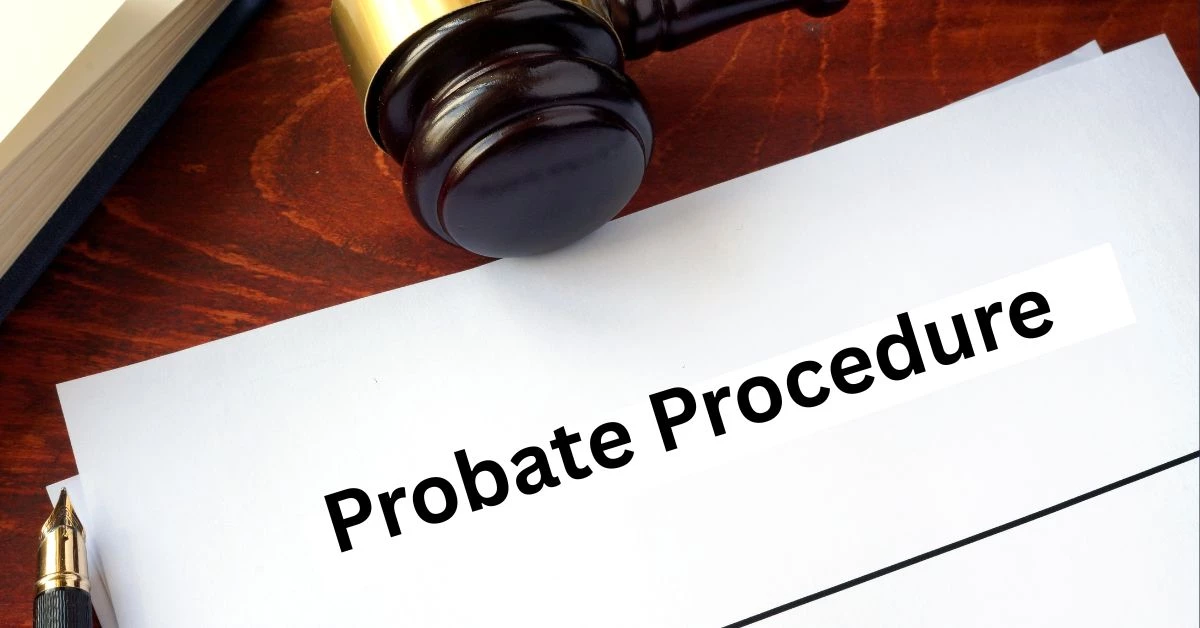A Comprehensive Recapitulation of Collective Criminal Liability in Indian Penal Code

Introduction
The Indian Penal Code, 1860 establishes the foundational framework for criminal law in India, delineating various forms of criminal liability that extend beyond individual culpability. Among its most significant provisions are Sections 34, 149, 109, and 120B, which collectively address the principles of joint liability, constructive responsibility, and collaborative criminal conduct. These provisions form the basis of Joint Criminal Liability under IPC, embodying the legal doctrine that criminal accountability can extend to individuals who may not have directly perpetrated the criminal act but participated in its planning, execution, or facilitation through various means.
The evolution of these provisions reflects the understanding that modern criminal enterprises often involve multiple participants operating with shared objectives or common intentions. The legislative framework recognizes that Joint Criminal Liability under IPC must encompass not only those who commit the physical act but also those who contribute to the criminal enterprise through instigation, conspiracy, or participation in unlawful assemblies.
Section 34 of the Indian Penal Code: Common Intention and Joint Criminal Liability under IPC
Legal Framework and Definition
Section 34 of the Indian Penal Code states: “When a criminal act is done by several persons in furtherance of the common intention of all, each of such persons is liable for that act in the same manner as if it were done by him alone” [1]. This provision establishes the principle of joint liability based on common intention, representing a departure from the general rule that individuals are responsible only for their own actions.
Essential Elements of Section 34
The application of Section 34 requires the satisfaction of several critical elements. First, there must be a criminal act committed by multiple persons. Second, these persons must share a common intention to commit the criminal act. Third, the criminal act must be done in furtherance of this common intention. The Supreme Court has consistently emphasized that common intention is distinct from similar intention, requiring a pre-existing meeting of minds among the participants [2].
Judicial Interpretation and Landmark Cases
The landmark case of Barendra Kumar Ghosh v. King Emperor (1925) established fundamental principles regarding the application of Section 34. In this case, the Privy Council held that for Section 34 to apply, there must be a pre-arranged plan or meeting of minds to commit the crime, though this common intention need not necessarily involve prior concert or pre-arranged design and may be formed during the commission of the crime [3].
In the recent judgment of Ram Naresh v. State of UP, the Supreme Court, through Justices Abhay S. Oka and Pankaj Mithal, observed that common intention is a psychological aspect that can arise just before or during the commission of the offense and does not necessitate explicit discussions or agreements among the co-accused [4]. The Court emphasized that mere common intention per se does not attract Section 34 unless the accused has performed some act in furtherance thereof.
Presence and Participation Requirements
The requirement of presence at the crime scene has been a subject of judicial debate. While some courts have held presence at the place of occurrence to be essential, recent Supreme Court judgments have recognized that participation in criminal acts can occur even from a distance, particularly with modern technology enabling remote facilitation of crimes [5]. The Court has clarified that the determination of common intention cannot be reduced to mere presence, nor can the lack of presence be construed as lack of participation.
Punishment Under Section 34
Section 34 itself does not prescribe any specific punishment as it is merely a rule of evidence that establishes joint liability. It plays a crucial role in enforcing Joint Criminal Liability under IPC, where the punishment for offenses committed under Section 34 corresponds to the punishment prescribed for the substantive offense committed. For instance, if murder is committed with common intention, each participant would be liable for punishment under Section 302 read with Section 34 of the IPC.
Section 149 of the Indian Penal Code: Unlawful Assembly and Vicarious Liability
Statutory Provisions and Scope
Section 149 of the IPC states: “If an offense is committed by any member of an unlawful assembly in prosecution of the common object of that assembly, or such as the members of that assembly knew to be likely to be committed in prosecution of that object, every person who, at the time of that offense, is a member of the same assembly, is guilty of that offense” [6].
Definition of Unlawful Assembly
Section 141 of the IPC defines unlawful assembly as an assembly of five or more persons having a common object to: (1) overawe by criminal force the Government or Legislature; (2) resist the execution of any law; (3) commit any mischief or criminal trespass; (4) deprive any person of enjoyment of rights; or (5) compel any person to do what he is not legally bound to do [7].
Judicial Precedents and Application
The Supreme Court in Surendra Singh v. State of Rajasthan recently observed that Section 149 will be attracted even if specifically named five or more persons are facing trial separately. The Court emphasized that once an accused is found to be part of an unlawful assembly, he would be liable for offenses committed by other members, even if the fatal blow was not given by him [8].
In Parshuram v. State of MP, the Supreme Court held that for conviction under Section 149, it is not necessary to demonstrate that a person committed an illegal overt act. The punishment prescribed by Section 149 is vicarious and does not mandate that every member of the unlawful assembly has personally committed the offense [9]. The Court clarified that what must be established by prosecution is membership in an unlawful assembly and entertainment of the common object along with other members.
Distinction Between Sections 34 and 149
While both sections impose vicarious liability, they differ significantly in scope and application. Section 34 requires active participation and a prior meeting of minds, while liability under Section 149 is created by virtue of membership in the unlawful assembly. Section 34 applies to any number of persons (minimum two), whereas Section 149 requires at least five persons to constitute an unlawful assembly [10].
Punishment and Legal Consequences
The punishment under Section 149 corresponds to the punishment prescribed for the substantive offense committed by any member of the unlawful assembly. The provision creates constructive liability, holding each member accountable for actions of the group in furtherance of the common object.
Section 109 of the Indian Penal Code: Abetment and Constructive Liability
Legal Definition and Framework
Section 109 of the IPC provides: “Whoever abets any offense shall, if the act abetted is committed in consequence of the abetment, and no express provision is made by this Code for the punishment of such abetment, be punished with the punishment provided for the offense” [11].
Forms of Abetment
Section 107 of the IPC defines abetment through three distinct methods: (1) instigating someone to commit an offense; (2) engaging in conspiracy to commit an offense; and (3) intentionally aiding the commission of an offense through acts or illegal omissions [12]. These forms encompass various ways individuals can contribute to criminal activities without directly participating in the physical commission of the crime.
Judicial Interpretation and Case Law
In Rishipal Singh v. State of Uttarakhand (2013), the Supreme Court held that mere presence at the scene of crime does not constitute abetment unless there is evidence of active participation, encouragement, or facilitation of the crime. The Court reiterated that to convict someone under Section 109, there must be a direct link between the abettor’s actions and the commission of the offense [13].
The Court has consistently emphasized that for conviction under Section 109, it is insufficient to prove mere association with the principal offender. There must be clear evidence of abetment that directly contributes to the commission of the offense, with the prosecution required to prove that intentions regarding commission of crime have been transmitted or shared with another person.
Punishment and Legal Consequences
The punishment for abetment under Section 109 is equivalent to the punishment prescribed for the principal offense. This principle ensures that those who encourage, instigate, or aid criminal activities face consequences commensurate with the gravity of the crime they helped facilitate.
Section 120B of the Indian Penal Code: Criminal Conspiracy
Statutory Framework and Definition
Section 120B prescribes punishment for criminal conspiracy, working in conjunction with Section 120A which defines criminal conspiracy as an agreement between two or more persons to commit an illegal act or a legal act through illegal means [14]. The provision recognizes that the mere agreement to commit a crime, regardless of whether the intended act is actually performed, constitutes a distinct criminal offense.
Essential Elements of Criminal Conspiracy
The offense of criminal conspiracy requires several key elements: (1) an agreement between two or more persons; (2) the agreement must be to commit an illegal act or a legal act through illegal means; and (3) the intention to carry out the agreement. The Supreme Court has emphasized that the essence of conspiracy lies in the agreement itself, and the meeting of minds is the sine qua non of criminal conspiracy [15].
Landmark Judicial Decisions
In Yashpal Mittal v. State of Punjab (1977), the Supreme Court stated that “the meeting of minds is the sine qua non of criminal conspiracy.” The Court recognized that conspiracy is rarely proved by direct evidence and that circumstantial evidence plays a crucial role in establishing the offense [16].
The case of Kehar Singh v. State demonstrated that conspiracy can be inferred from circumstances and conduct of the accused, even if they are not directly linked to the criminal act. The Supreme Court held that circumstantial evidence, when properly evaluated, can establish the existence of conspiratorial agreement [17].
In State of Maharashtra v. Som Nath Thapa & Ors (1996), involving army officers accused of conspiring to steal military secrets, the Supreme Court clarified the distinction between mere knowledge of a conspiracy and active participation in it, holding that only active participation leads to criminal liability [18].
Punishment Under Section 120B
Section 120B provides for two categories of punishment based on the gravity of the intended offense. For conspiracies to commit offenses punishable with death, life imprisonment, or rigorous imprisonment for two years or more, the punishment is the same as that for abetment of such offense. For other conspiracies, the punishment is imprisonment for up to six months, fine, or both [19].
Recent Developments
In Pavana Dibbur v. The Directorate of Enforcement, the Supreme Court clarified that Section 120B cannot be treated as a standalone scheduled offense under the Prevention of Money Laundering Act unless the criminal conspiracy relates to an offense already included in the PMLA schedule [20].
Comparative Analysis and Legal Distinctions
Common Intention vs. Common Object
While Sections 34 and 149 both address Joint Criminal Liability under IPC, they operate on distinct principles. Common intention under Section 34 requires a pre-existing mental state shared among the participants, whereas the common object under Section 149 can evolve during the course of the unlawful assembly’s activities.
Individual vs. Group Dynamics
Section 109 focuses on individual contribution to criminal activities through abetment, while Sections 34, 149, and 120B address group dynamics and collective responsibility. The distinction is crucial in determining the appropriate legal framework for prosecution.
Evidentiary Requirements
All four sections present unique evidentiary challenges. Common intention and criminal conspiracy often require inference from circumstantial evidence, while unlawful assembly and abetment may involve more direct forms of proof regarding participation and facilitation.
Regulatory Framework and Enforcement
Investigation and Prosecution
Law enforcement agencies must carefully analyze the specific circumstances of each case to determine the appropriate section under which to prosecute. The choice between these provisions significantly impacts the prosecution’s burden of proof and the defense strategies available to accused persons.
Judicial Safeguards
Courts have established numerous safeguards to prevent misuse of these provisions. The requirement for corroborative evidence in conspiracy cases, the emphasis on active participation in abetment charges, and the strict interpretation of common intention and common object serve as important protections against wrongful convictions.
Contemporary Challenges and Applications
Technology and Modern Crime
The advent of digital technology has created new challenges in applying these traditional legal principles. Courts are increasingly required to adapt concepts of presence, participation, and facilitation to scenarios involving cyber crimes, online conspiracies, and digital evidence.
Organized Crime and Terrorism
These provisions have found particular relevance in prosecuting organized crime and terrorism cases, where multiple participants operate with sophisticated coordination and planning. The flexibility of these sections allows for effective prosecution of complex criminal enterprises.
Conclusion
Sections 34, 149, 109, and 120B of the Indian Penal Code represent a sophisticated legal framework for addressing Joint Criminal Liability under IPC. These provisions recognize that criminal responsibility extends beyond individual actions to encompass various forms of participation, planning, and facilitation in criminal enterprises. The evolution of judicial interpretation has refined the application of these sections while maintaining necessary safeguards against abuse.
The continued relevance of these provisions in contemporary criminal law demonstrates their fundamental importance in maintaining social order and ensuring that all participants in criminal activities are held accountable for their contributions. As criminal methodologies evolve with technological advancement and social change, these sections provide the flexibility necessary for effective law enforcement while preserving the principles of due process and fair adjudication.
Legal practitioners, law enforcement agencies, and judicial officers must maintain a thorough understanding of Joint Criminal Liability under IPC to ensure its proper application in diverse criminal scenarios. The interplay between these sections creates a comprehensive framework that addresses the full spectrum of collective criminal conduct, from spontaneous group violence to sophisticated criminal conspiracies.
References
[1] The Indian Penal Code, 1860, Section 34. Available at: https://www.indiacode.nic.in/show-data?actid=AC_CEN_5_23_00037_186045_1523266765688&orderno=35
[2] Bar and Bench. (2019). Common intention under Section 34 IPC cannot be confused with similar intention: Calcutta HC. Available at: https://www.barandbench.com/news/common-intention-under-section-34-ipc-cannot-be-confused-with-similar-intention-calcutta-hc
[3] iPleaders. (2022). Section 34 of IPC, 1860. Available at: https://blog.ipleaders.in/section-34-of-ipc-1860/
[4] Drishti Judiciary. (2024). Section 34 of Indian Penal Code, 1860. Available at: https://www.drishtijudiciary.com/current-affairs/section-34-of-indian-penal-code-1860
[5] Criminal Law Studies. (2022). The “Presence of the Accused” Requirement under Section 34 of the IPC: An Analysis. Available at: https://criminallawstudiesnluj.wordpress.com/2022/07/04/the-presence-of-the-accused-requirement-under-section-34-of-the-ipc-an-analysis/
[6] The Indian Penal Code, 1860, Section 149. Available at: https://www.indiacode.nic.in
[7] The Indian Penal Code, 1860, Section 141. Available at: https://www.indiacode.nic.in
[8] Live Law. (2023). Section 149 IPC Will Be Attracted If Five Or More Persons Specifically Named In FIR Are Facing Trial Separately: Supreme Court. Available at: https://www.livelaw.in/supreme-court/supreme-court-judgment-unlawful-assembly-separate-trial-for-named-persons-fir-common-object-criminal-trial-226654
[9] Live Law. (2023). For Conviction Under Section 149 IPC, No Overt Act Needed; Membership Of Unlawful Assembly Enough: Supreme Court. Available at: https://www.livelaw.in/supreme-court/for-conviction-under-section-149-ipc-no-overt-act-needed-membership-of-unlawful-assembly-enough-supreme-court-241641
[10] iPleaders. (2022). Difference between Sec 34 and 149 IPC, 1860. Available at: https://blog.ipleaders.in/comparative-analysis-of-sec-34-and-149-ipc-1860-with-judicial-interpretations/
[11] The Indian Penal Code, 1860, Section 109. Available at: https://www.indiacode.nic.in
[12] The Indian Penal Code, 1860, Section 107. Available at: https://www.indiacode.nic.in
[13] Rest The Case. (2024). IPC Section 109 – Punishment of Abetment. Available at: https://restthecase.com/knowledge-bank/ipc/section-109
[14] The Indian Penal Code, 1860, Section 120A & 120B. Available at: https://www.indiacode.nic.in
[15] De Facto Law. (2024). Understanding IPC Section 120B: Criminal Conspiracy and Its Implications. Available at: https://www.defactolaw.in/post/understanding-ipc-section-120b-criminal-conspiracy-and-its-implications
[16] iPleaders. (2023). Section 120B IPC punishment. Available at: https://blog.ipleaders.in/section-120b-ipc-punishment/
[17] The Law Advice. (2024). Criminal Conspiracy: Section 120B IPC and Section 61 Bhartiya Nyay Sanhita. Available at: https://www.thelawadvice.com/articles/criminal-conspiracy-a-comprehensive-analysis-with-landmark-judgments
[18] iPleaders. (2022). Criminal conspiracy under I.P.C. Available at: https://blog.ipleaders.in/criminal-conspiracy-under-ipc/
[19] Lawtendo. (2024). IPC Section 120 B – Punishment to Criminal Conspiracy. Available at: https://www.lawtendo.com/indian-kanoon/ipc/section-120b
[20] Cyril Amarchand Mangaldas. (2024). Section 120B of IPC cannot be treated as a standalone offence to attract prosecution under PMLA: Supreme Court. Available at: https://disputeresolution.cyrilamarchandblogs.com/2024/01/section-120b-of-ipc-cannot-be-treated-as-a-standalone-offence-to-attract-prosecution-under-pmla-supreme-court/
Download full Booklet here: https://bhattandjoshiassociates.s3.ap-south-1.amazonaws.com/judgements/THE-INDIAN-PENAL-CODE-1860.pdf












